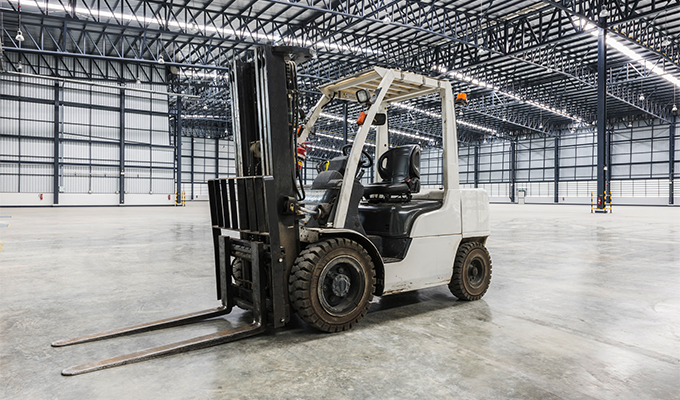Determining which construction forklift is best for your specific application can be challenging. You want to ensure all the equipment you use is effective, safe, and reliable.
No construction firm wants to use worn-down, outdated, or potentially dangerous equipment, as it can bring projects to a screeching halt or put workers in danger. Therefore, choosing the best forklift with the right capabilities is crucial to ensure projects are completed safely and successfully.
Before Choosing a Forklift
Before you choose which heavy machinery and equipment you will use for a specific project, you need to consider all the nitty-gritty details of the project itself. You should consider:
- The project’s scope.
- Potential job site conditions.
- Equipment sizes.
- Specialty equipment.
- Accompanying attachments you need.
- Service needs of equipment you may use.
As you can see, there are several questions to ask yourself before renting or purchasing any heavy equipment. For example, if your job site is in an area prone to poor weather conditions, you need to prepare and determine how you will store heavy equipment.
If you are operating in a confined space, equipment needs to be the right size. Before you choose a forklift, consider these factors so you can pick the best equipment for your project.
Categories of Forklifts and Their Unique Applications
Since numerous types of forklifts are available, it can be difficult to know which type is the best for your application or which will help you complete your project in time. Each project is unique, meaning you could need multiple types of forklifts across your project portfolio. Here are the main categories of forklifts and what applications they are commonly used for.
1. Warehouse Forklifts
A warehouse forklift is described as any standard lift truck used indoors. There are many warehouse forklift trucks, but they all share a few common characteristics — they are all designed for efficient, healthy, and safe use.
Warehouse forklifts must be powered by a clean energy source and have a tight turning radius. Some warehouse forklifts have capacities of up to 20,000 pounds, depending on the brand and design.
Applications: Best for raising and moving materials over short distances.
2. Counterbalance Forklifts
Counterbalance forklifts — sometimes called Class I forklifts — are the most common type of forklift used in warehousing and manufacturing. They come in electric, diesel, and propane-powered options, depending on which one your company wants. Electric forklifts can result in cost savings since they do not require you to purchase fuel.
Applications: Best for indoor use, but can also be used outdoors on flat, smooth, and even ground.
4. Pallet Jacks
Pallet jacks — also known as hand pallet trucks or pedestrian-operated pallet trucks — are used for manual tasks. Operators position the forks of the lift underneath pallets, jack the pallet so it is lifted off the ground, and prepare for transport. Pallet jacks are commonly found in warehouses or manufacturing facilities, as they allow workers to move heavy materials with ease.
Applications: Best for transporting materials indoors on smooth surfaces unless it is an all-terrain pallet jack, which you can use outdoors along different surfaces.
5. Rough-Terrain Forklifts
Rough-terrain forklifts are helpful because they have numerous applications. You can use rough-terrain lifts indoors on smooth surfaces or outdoors on rocky, rough-terrain surfaces.
These forklifts have special tires that can manage uneven terrain or weather conditions like rain or snow. If you decide to use a rough-terrain forklift, remember that it has a very powerful engine, so only skilled operators can use it on a construction site.
Applications: Best for a variety of indoor and outdoor applications, such as those with uneven or rocky ground.
6. Autonomous Forklifts
As their name suggests, autonomous forklifts operate with little to no human intervention. They are also called autonomous mobile robots. A primary benefit of these lifts is they can pilot themselves through a factory without requiring human operators.
After pallets are loaded, autonomous lifts deliver them to the correct workstation once it receives the signal from an IoT sensor. Sales for autonomous forklifts are increasing as industrial companies go digital and adopt more advanced autonomous technologies.
Applications: Best for grabbing, hauling, and transporting large, heavy pallets to and from different areas of your construction site.
7. Telehandlers
Last but not least is the telehandler. A telehandler, telescopic, or reach forklift combines a few different components — a crane, a forklift with a boom, and an extendable arm. Telehandlers are considered a staple in the industry since they are used so often for a range of tasks.
Twins forks on telehandlers move pallets and a basic telehandler is capable of lifting 5,500 pounds up to 19 feet in the air. If you need to lift materials or employees to a higher elevation, it is wise to use a telehandler instead of other forklifts.
Applications: Best for lifting workers into tight spaces or at odd angles.
Choosing the Right Forklift for Your Projects
A primary responsibility of a construction crew manager is ensuring employees have the equipment necessary to perform tasks and complete the job correctly. With the right types of equipment, projects get carried out and clients become satisfied. Use the tips above to help you choose which forklift is right for your team.
About the Author
Emily Newton is an industrial writer who specializes in covering how technology is disrupting industrial sectors. She’s also the editor-in-chief of Revolutionized where she covers innovations in industry, construction, and more.


